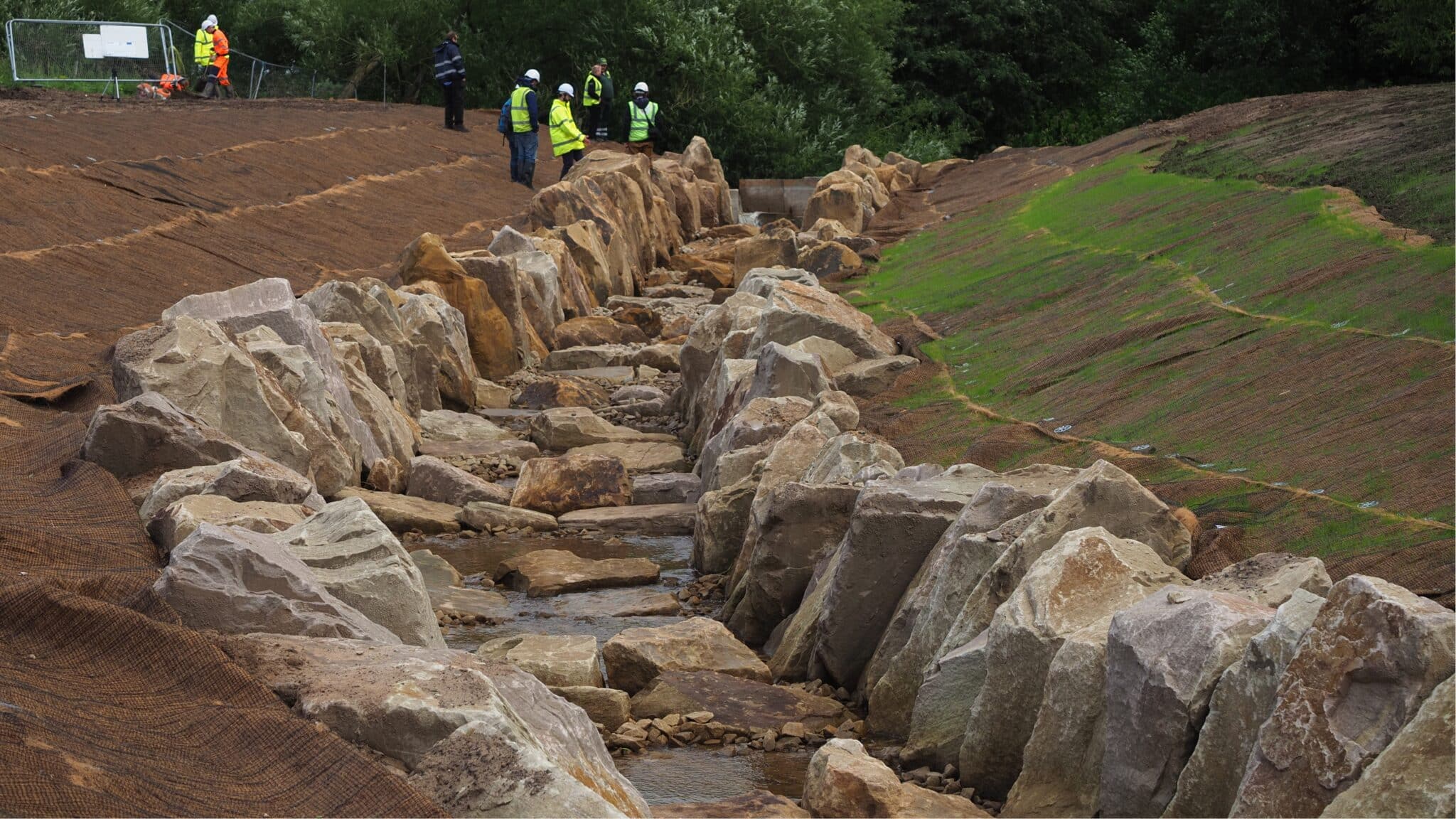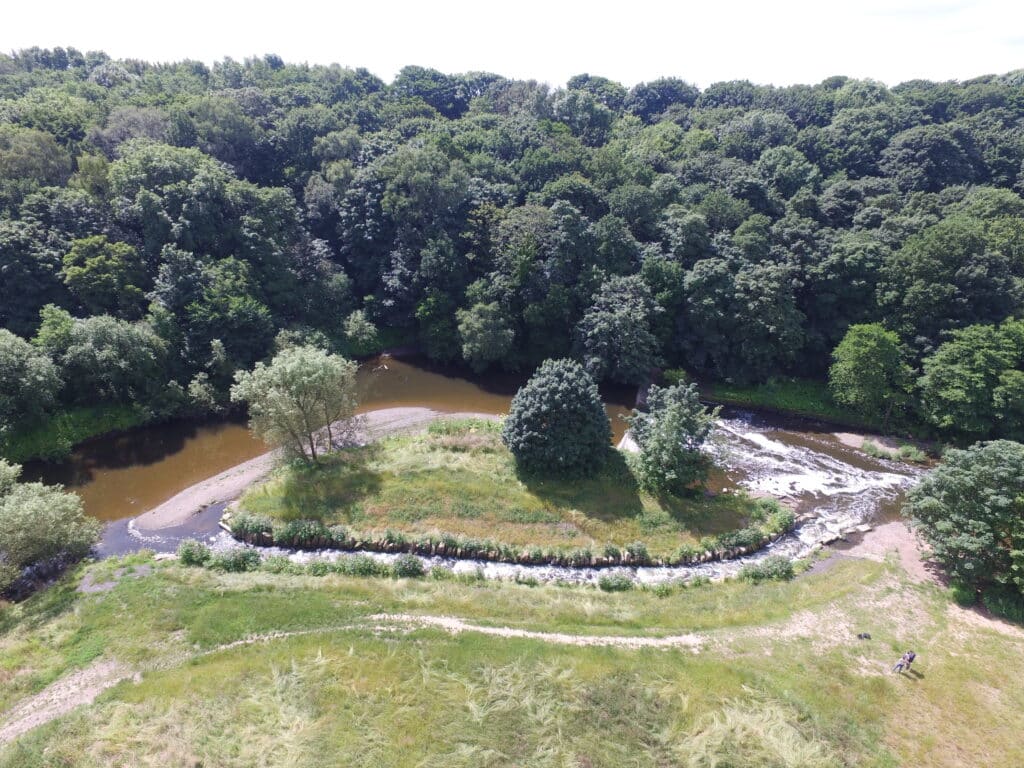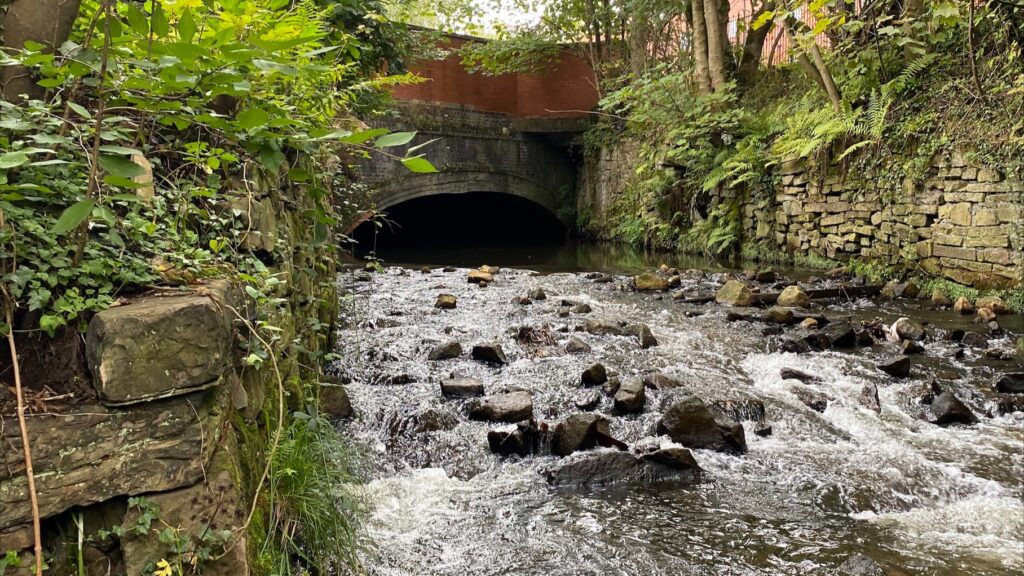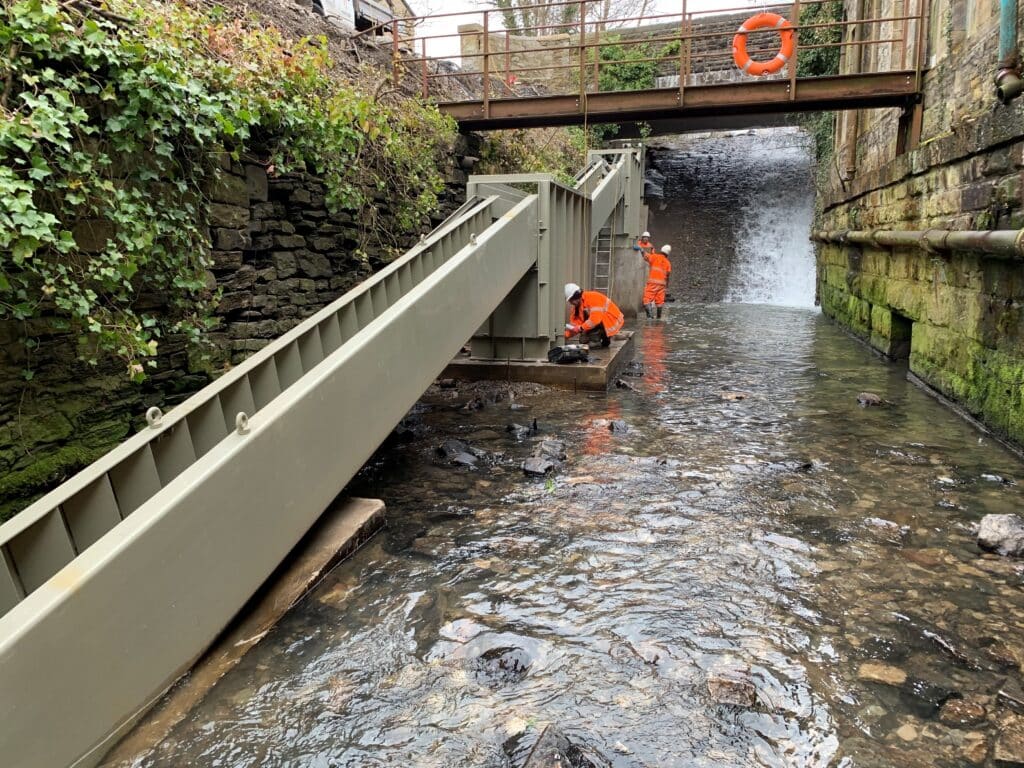
What Is A Fish PAss?
You’ve probably heard the term fish pass used a lot. After all, improving fish passage is one of our key activities. But maybe you’re still wondering what they are and why we construct them.
To put it simply, a fish pass is a structure build on, in, or alongside a river barrier. These structures help fish move up and down river blocking barriers like weirs and dams. You might also know them as salmon or fish ladders.
Fish passes come in various forms. Sometimes all that is needed is a reprofiling of the weir face to make the gradient less steep. Another popular type of fish pass is a rock ramp. As the name suggests this involves the addition of rocks and boulders to the weir which change the waterflow and gradient of the structure, allowing fish to climb the weir with an improved water flow and resting places.

However, sometimes we need a more complex solution. In this case we will make a more traditional fish ladder made up of multiple stepped pools that go up the side of the weir. Fish jump from pool to pool and can also use the pools to rest in. If the barrier cannot be modified because, for example, there are utilities running close to it, then a bypass channel can be made. On the left is a photo of our bypass channel on the River Darwen at Holland Wood.
So, what’s the point of a fish pass?
Fish need to move up and down rivers to feed, breed, and find shelter. As the name suggests migratory fish like Atlantic salmon, brown trout, and European eels all make huge journeys from rivers to the sea and back again. In order to do this, they need to be able to move upstream and downstream.
However, manmade barriers like weirs are obstacles that cannot be passed. This is usually because the barrier is too tall or too steep. Even when they can be passed, they take up valuable energy that many fish simply don’t have when they’re at this stage of their migratory journey. On the right is a photo of a rock ramp fish pass constructed as part of the Our Douglas project. This fish pass has a shallow gradient and plenty of resting places.
Even non migratory fish still need to move up and down stream so that they can find new food sources or escape from issues such as floods, heat waves, droughts, pollution incidents or predators.
Perhaps most importantly, all fish need to travel around the river to find suitable breeding partners and spawning habitats. Without this, they cannot reproduce, and fish numbers will decline. The ones that do manage to reproduce only have access to a smaller gene pool, which can have a severe impact on genetic diversity.

How do you design the fish passes?

Our team use Computer Aided Design (CAD) software to create designs. This allows us to create detailed drawings of fish passes on top of topographical survey data. Depending on the type of pass we’re designing, we identify the best location for it from the data, looking to see if there are any elements of the environment that we can take advantage of to make construction easier. On the left is a photo of a fish pass at Primrose Lodge. Due to the height of the barrier and the surrounding houses, roads, and factories, this was a complex design.
Then following guidance from the various sources, including the Environment Agency, we create the design drawings. These include cross-sections, long-sections, and in plan-views that detail the dimensions of the fish pass, the materials used, and the construction process. In all circumstances these fish passes will be designed so as not to increase flood-risk. Additionally, they usually need approval from the Environment Agency’s National Fish Pass Panel before construction can proceed.
Why are there so many barriers in the catchment?
If there’s anything Lancashire has in an abundance it’s rain. The damp climate made it perfect for milling cotton and so, during the Industrial Revolution, thousands of mills sprang up across the county. What’s more, all these mills needed power. That’s where the weirs come into play!
Weirs across rivers and streams helped to channel and hold water in mill races. This water was then directed into water wheels and transformed into power. Many mills have been repurposed, but the vast majority of the weirs are now unused, unmaintained, and making our rivers impassable. In fact, it’s we estimate that we have well over a thousand known barriers in the catchment. However, the number is likely to be even higher than we’re estimating as many are under culverts or on private land.

